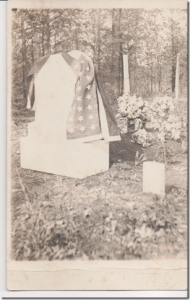Harold Broida and Leah (Schreiber) Broida of Pittsburgh, Pennsylvania
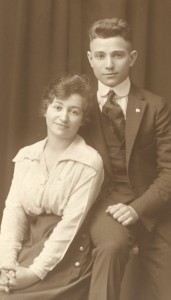
Harold “Harry” Broida was the last of eight sons born to John (Zelig) Broida (1857-1938) and Gittel (Gertrude) Frank (1859-1898). Born December 25, 1897 in Pennsylvania, his mother passed away the next year, and he was living with his Uncle Jacob Broida, and Jacob’s wife Annie, in St. Louis, Missouri in the 1910 US Federal census. His brother Morris was living there too.
[Correction 12/2/13: Harold/ Harry and his brother Morris were not living with their Uncle Jacob, even though the 1910 census states they were nephews of the head of household. Jacob was actually the cousin of their father, John. John’s father was Joseph, and Joseph’s brother Theodore was the father of this Jacob (1857-1932, lived in St. Louis after he immigrated to US in 1886). This solves a mystery that Hilda, grand-daughter of Morris who was the son of Peter, always had- she wanted to know who “Yankel” (Hebrew for ‘Harold’) was that lived with Jacob. Thanks to AG for the correction- and the 2 nice chats on the phone.]
Leah Schreiber immigrated to the United States in 1906 from Russia when she was just 5 years old. Her parents are unknown. She was working at Frank & Seder, a clothing store in Pittsburgh, Pennsylvania, when she was just 15, as a clerk. In the 1917 Pittsburgh City Directory she was listed as a Stock Girl at Frank & Seder. She may have met Harold Broida there, as he was the Head Stockman in September, 1918, per his World War I Draft Registration. Harold married Leah Schreiber about 1917-1918- he was 20, she just 16.
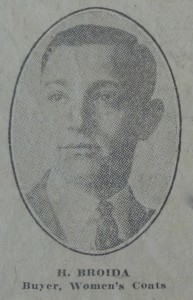
Harold’s World War I draft card completed 12 Sep 1918 lists him as being short with a medium build, and brown hair and eyes. He stated Leah Broida was his next of kin, and they were living at 114 Wooster Street, Pittsburgh, Pennsylvania. He was just 20 years old, so it is surprising that he was not drafted for World War I.
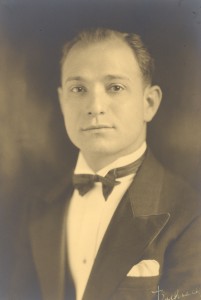
Harold and Leah lived in Pittsburgh, Pennsylvania, for the remainder of their married life. In 1932 they were living at 418 Highland Ave S, Apt. 610 in Pittsburgh, and in 1946 were living at “The Frontenac Apartments.” The 1940 US Federal Census noted that he was working 45 hours per week as a buyer, and made $5,000+ – only 2 others on that census page made that amount, and most neighbors made much less. Harold and Leah never had children.
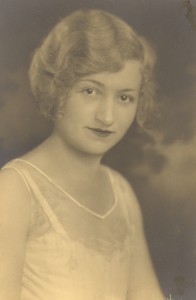
Harold died in 1953 at the age of 55.
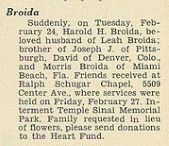
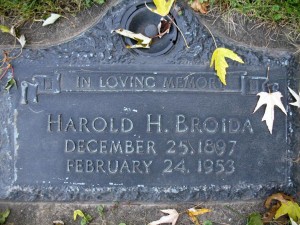
Leah lived another 18 years, with her death occurring in 1971.
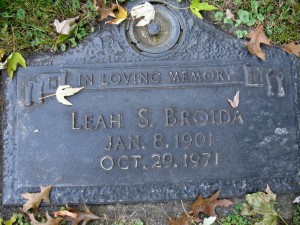
Notes, Sources, and References: 1) Family oral history 2) 1910 US Federal Census: Source Citation: Year: 1910; Census Place: St Louis Ward 4, Saint Louis City, Missouri; Roll: T624_812; Page: 23A; Enumeration District: 0064; FHL microfilm: 1374825. Ancestry.com, accessed 15 Nov 2013. Living at 1448 N. 11th St. 3) World War I Draft Registration Cards, 1917-1918: Source Citation: Registration State: Pennsylvania; Registration County: Allegheny; Roll: 1908016; Draft Board: 4. Ancestry.com, accessed 15 Nov 2013. 4) 1932, 1946 Pittsburgh, PA City Directories: Ancestry.com. U.S. City Directories, 1821-1989 [database on-line]. Provo, UT, USA: Ancestry.com Operations, Inc., 2011. Accessed 15 Nov 2013. 5) 1940 US Federal Census: Source Citation: Year: 1940; Census Place: Pittsburgh, Allegheny, Pennsylvania; Roll: T627_3655; Page: 6B; Enumeration District: 69-166. Ancestry.com, accessed 15 Nov 2013. 6) The Jewish Criterion, Pittsburgh Pennsylvania, 27 Feb 1953, p21, c4. 7) Find A Grave: Harold H. Broida Memorial # 79579417, and Leah S. Broida Memorial # 79579467. Headstone photographs used with permission of photographer. Accessed 15 Nov 2013. Please contact us if you would like higher resolution images. Copyright 2013 by Heritage Ramblings Blog and pmm.
